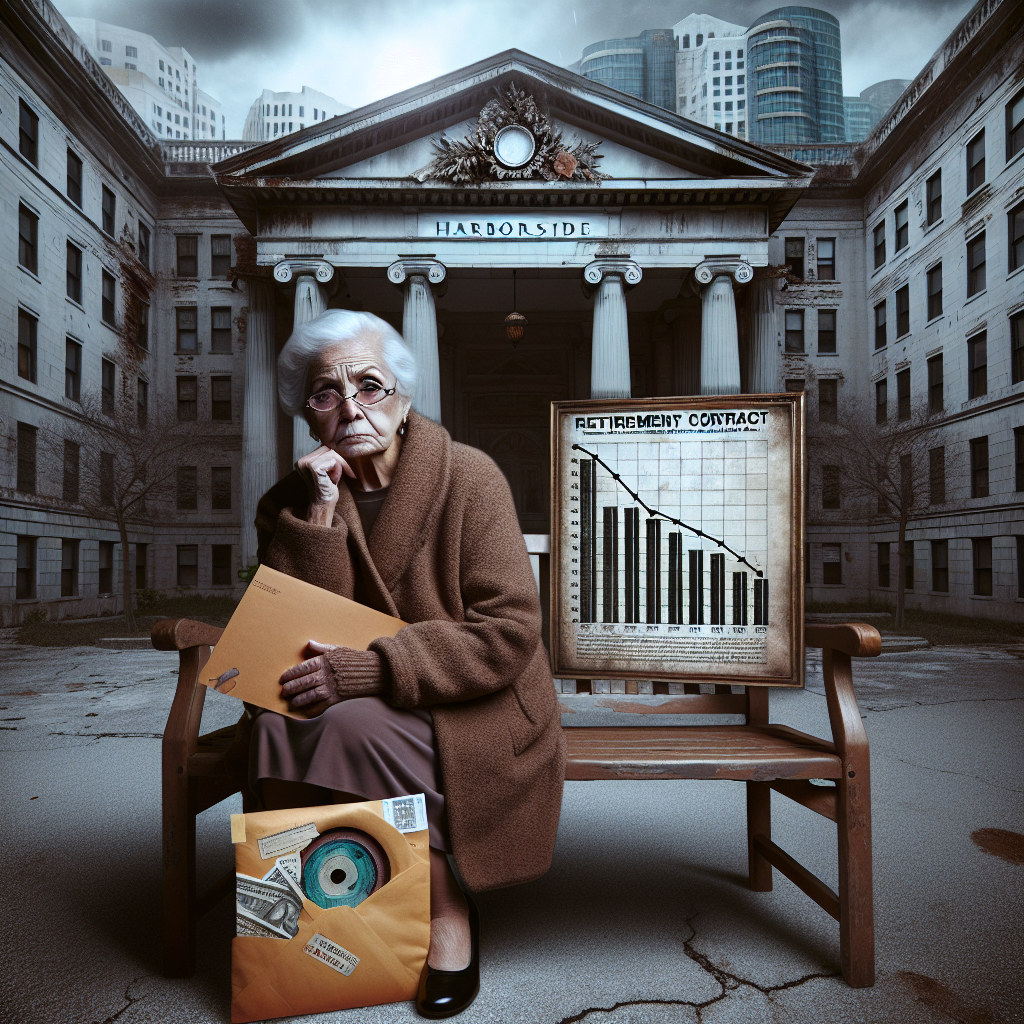🧠 When a Million-Dollar Promise Turns into Pocket Change: How Aging Boomers Got Burned by a Broken Retirement Model
Let’s get real about real-world assets—this time, it’s not tokenized real estate or NFT art—it’s the homes retirees sold to buy safety, care… and a dream that shattered like a bad smart contract.
Meet Arlene Kohen: 89 years young, widowed, and once hopeful. In 2020, she handed over $945,000 in entrance fees and signed up for monthly payments of $5,700 to live at Harborside, a luxury continuing-care retirement community (CCRC) on New York’s Long Island. The promise? Full care, refined living, and a 75% refund when she either passed or packed up. That’s the kind of stake many elders buy into—funded by years of work and, more often, the sale of a lifetime home. Real talk: it’s a literal trade of equity for dignity.
But plot twist—Harborside wasn’t running on solid rails. Despite its glossy brochure and plush interiors, the facility had financial fragility baked in. After racking up three bankruptcies and going full-on distressed asset mode, it was scooped up by an investor who, in short, cut back services while keeping the price tag steep. Not very “long-term care,” if you ask me. Arlene, like many others, was forced to find care elsewhere—sometimes in panic, sometimes in haste.
Her family expects a refund of just one-third of what was promised. Do the math: that’s close to a $600K vaporized. And she’s not alone. According to The Wall Street Journal and court docs, 16 similar facilities across the U.S. have pulled bankruptcy cards since 2020, nuking $190 million in savings from over 1,000 families. That’s real-world value—gone. Not lost to volatility like crypto—gone due to opaque models and lax oversight.
Let’s zoom out 📡
You might think these are one-offs, but it’s a system-level flaw. These CCRCs are often non-profit entities, built with tax-exempt bonds, and fed by upfront fees paid by incoming residents—fees usually sourced by selling homes. In bull markets? That churn flows. But when housing slows, move-ins stall, and the rug gets yanked from under the entire ops stack.
Harborside’s blueprint was textbook. It launched in 2010, post-2008 crash (red flag factory), and struggled with occupancy. In 2014—first bankruptcy. Then again in 2021 and 2022 due to bond defaults. Each time, residents were left to ride out bankruptcy waves—without the governance protections you’d expect from multi-million-dollar life decisions.
As of now, 187 Harborside residents accepted a Chapter 11 deal, recovering—brace yourself—just 32% of their original entrance fees. That’s roughly $121 million refunded. 🫠
🛑 Stop. Reflect.
In a world where tokenization, smart contracts, and verifiable transparency are revolutionizing asset protection (shout out to real-world assets on-chain 🔗), how is this $623B+ retirement industry still running on vibes and vintage spreadsheets? If someone can mint an AI-generated yacht on crypto and sell partial ownership in minutes, shouldn’t senior living contracts offer a bit more traceability than scribbled promises and abstract IOUs?
The generational wealth tied to senior communities is enormous—and aging baby boomers aren’t just checking in, they’re cashing out lifetimes of value. And yet, no federal standard regulates how these communities use or return entrance fees. Most oversight is left to the state level, where laws vary wildly—and are often underdeveloped or underfunded.
Imagine a smart contract for senior care: fully audited, refundable fees escrowed on-chain, resident care requirements mapped with auto-executing triggers. Transparency. Verifiability. Liquidity. Security. Doesn’t sound so far-fetched, right? Especially when the alternative is the same old system—boom, bust, heartbreak.
👵🏽👴🏽 The Promise Generation deserves better than bankruptcy bingo.
As we level up tech and build futures fortified with AI, DeFi, and digital trust layers, the biggest dubs will come from industries that need it most. Retirement communities? Absolutely ripe for disruption. No more centralized collapse. No more mystery math. No more lost legacies.
Innovation never sleeps—and it shouldn’t let our elders down while doing so.
—Anita










